My Golden Rule for Keeping Plants Alive Has a 100% Success Rate
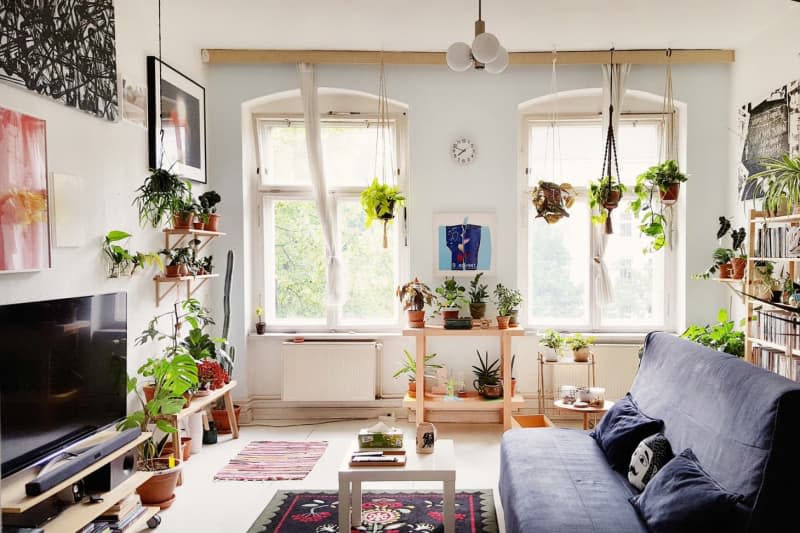
Some people have a natural talent for plants; anything they touch seems to immediately perk up, brighten, and launch new shoots, no matter what type of plant it is. Friends, I am not that kind of person. I come by my houseplant skills through a stubborn dedication to fill my home with greenery no matter the costs to my innocent plants. In the early days of my endeavor, that often meant purchasing houseplants and then slowly watching them die over the course of a month. Then, I’d begin my Sisyphean task all over again.
I didn’t get it. I have tons of windows in my home — one thing that totally sold me on it — and made sure to only use pots with drainage so my plants never grew waterlogged. But my kill count was still so high. I’d even lost “easy” plants, like a palm and a peperomia. And don’t even get me started on the number of succulents I’ve had to put to rest.
Not everything in my home died, though, and that led me to discovering my golden rule for plant buying that has yet to steer me wrong: I only buy plants with names that include “philodendron” or “pothos.”
What I realized after looking at my plant collection was that the only ones that were able to thrive in the light and humidity conditions in my home — aside from the so-tolerant-I’m-not-sure-they’re-not-fake snake plants — were the golden pothos and heartleaf philodendron plants. I wanted a little more variety in my houseplants, but I decided that those general types would serve as a guidepost for me the next time I bought a plant.
Turns out, I’m a genius! (Or at least, no longer a plant murderer.) Narrowing in on a general category of plant that I know successfully grows in my home has meant that I haven’t had to throw out a single plant corpse. It doesn’t hurt that the two categories of plant, pothos and philodendron, are notoriously forgiving.
There’s a ton of variety in easily available pothos and philodendron plants that I’ve been able to pick up not just at nurseries, but also at grocery stores and even The Home Depot. Here’s what I’ve brought home that’s still thriving.
One note, for my fellow pet owners: Pothos and philodendron are both toxic to cats and dogs, according to the ASPCA. I have two dogs, so I keep these plants in hanging containers or on high shelves that my pets cannot reach. If you have a cat who likes to climb, they might not be a fit for you.
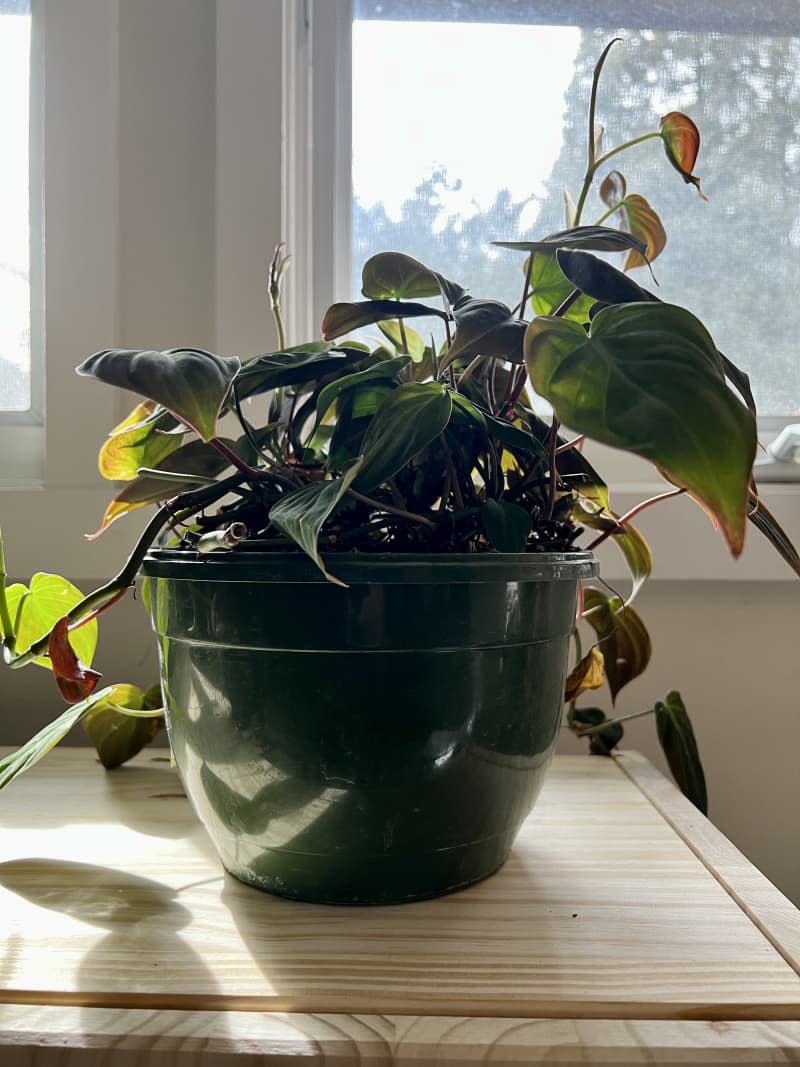
Philodendron Micans
The leaves of the philodendron Micans have a velvety appearance and a color that fades from dark green to a beautiful rust-brown, which makes them look so luxurious. I let my philodendron Micans trail over my shelves to a gorgeous effect.
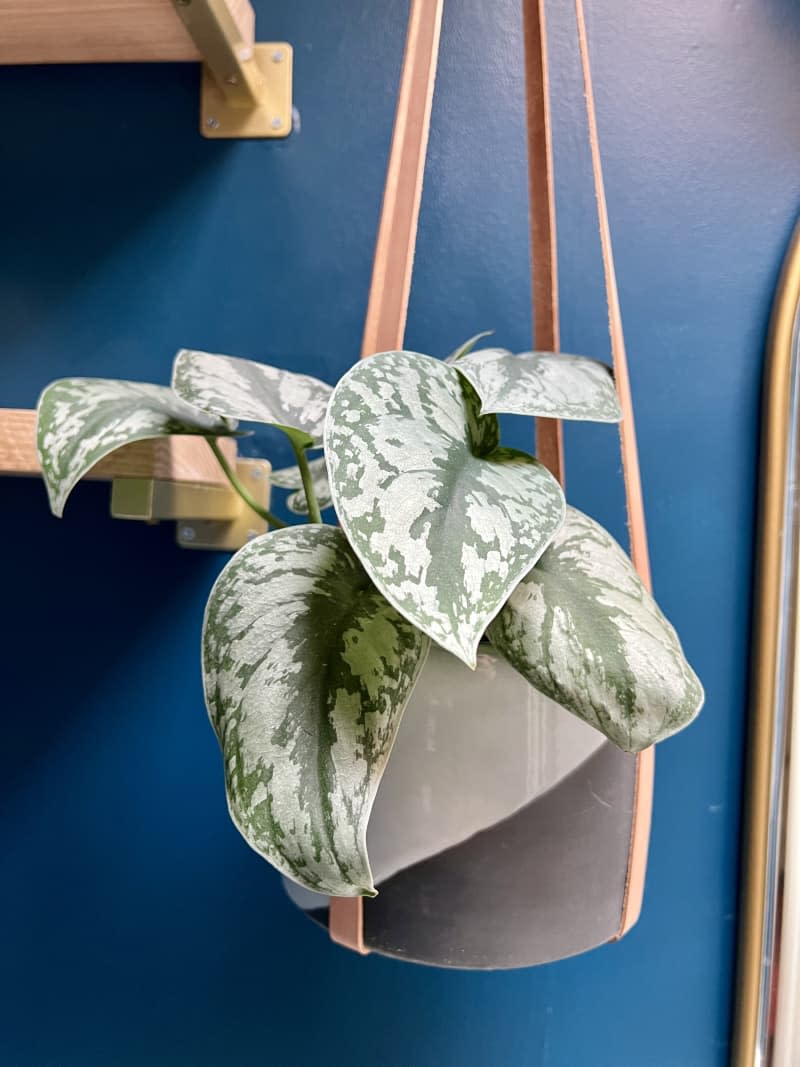
Satin Pothos
Technically, the satin pothos isn’t even a pothos — its scientific name is Scindapsus pictus, as it’s part of the Scindapsus genus. But the popular name follows my golden rule, and it’s been a success! The satin pothos has a slight sheen to its leaves and pretty mottled coloring. I’ve noticed my satin pothos is slower to grow than my other plants, but its big leaves make up for that.
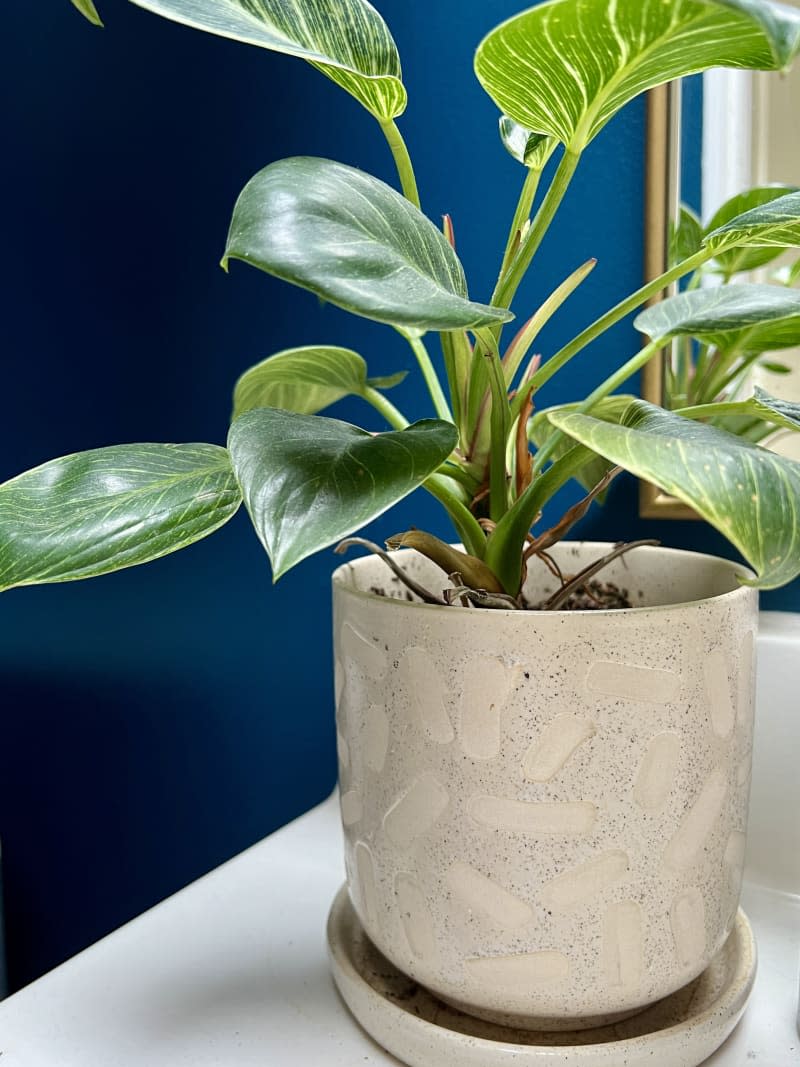
Philodendron Birkin
A few years ago, the philodendron Birkin was expensive and difficult to find. Not so anymore! I grabbed my most recent philodendron Birkin — after my first lasted an astonishing three years, which is practically immortality in my household — for $15 from the grocery store. The white-veined leaves on this one make it so striking. This plant has an upright habit so it looks great on a vanity or dresser.
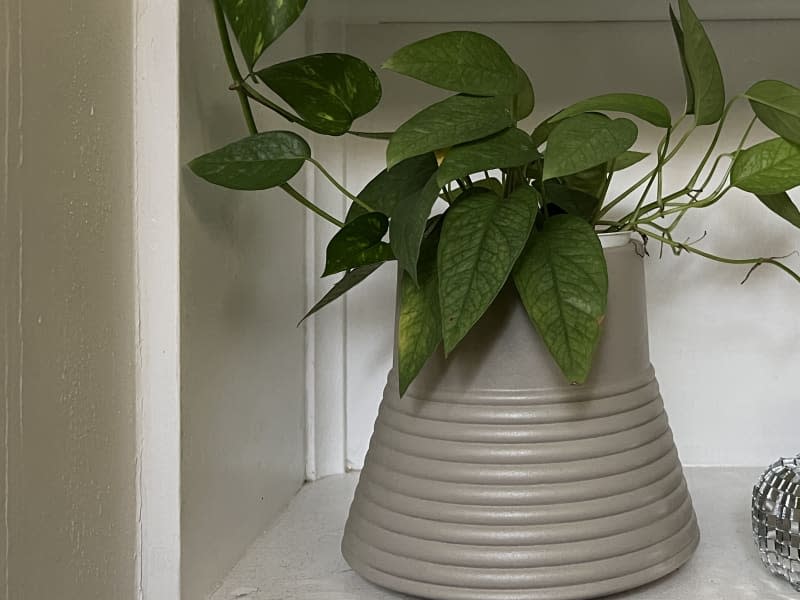
Cebu Blue Pothos
The cebu blue pothos is another plant variety that used to be only for diehard plant aficionados. I grabbed mine from the grocery store for about $10 each! These have leaves that are longer and more slender than what you’d expect of a pothos variety, and have a rich green color that almost looks like it’s tinged with blue. Cebu blue pothos are lovely trailers.
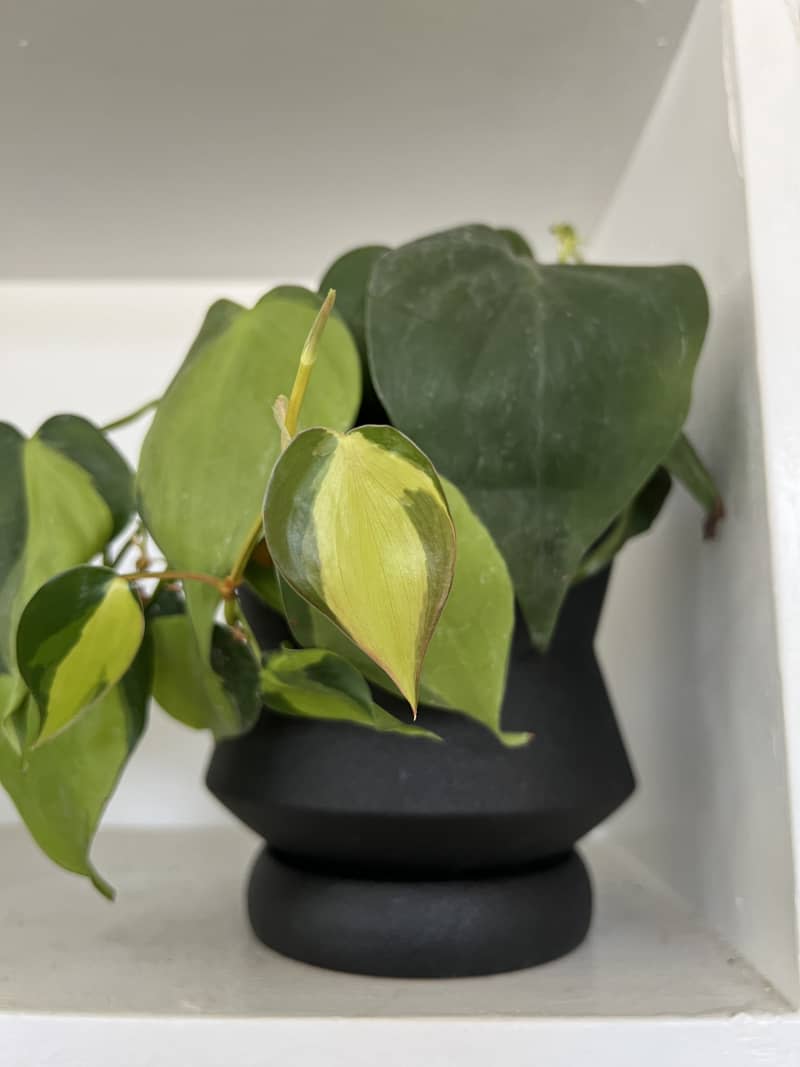
Philodendron Brasil
The philodendron Brasil has the same heartleaf shape and trailing habit philodendron lovers are familiar with, but it also has a bright two-tone coloring on the leaves. The graphic combo of dark and lime green makes this plant pop.
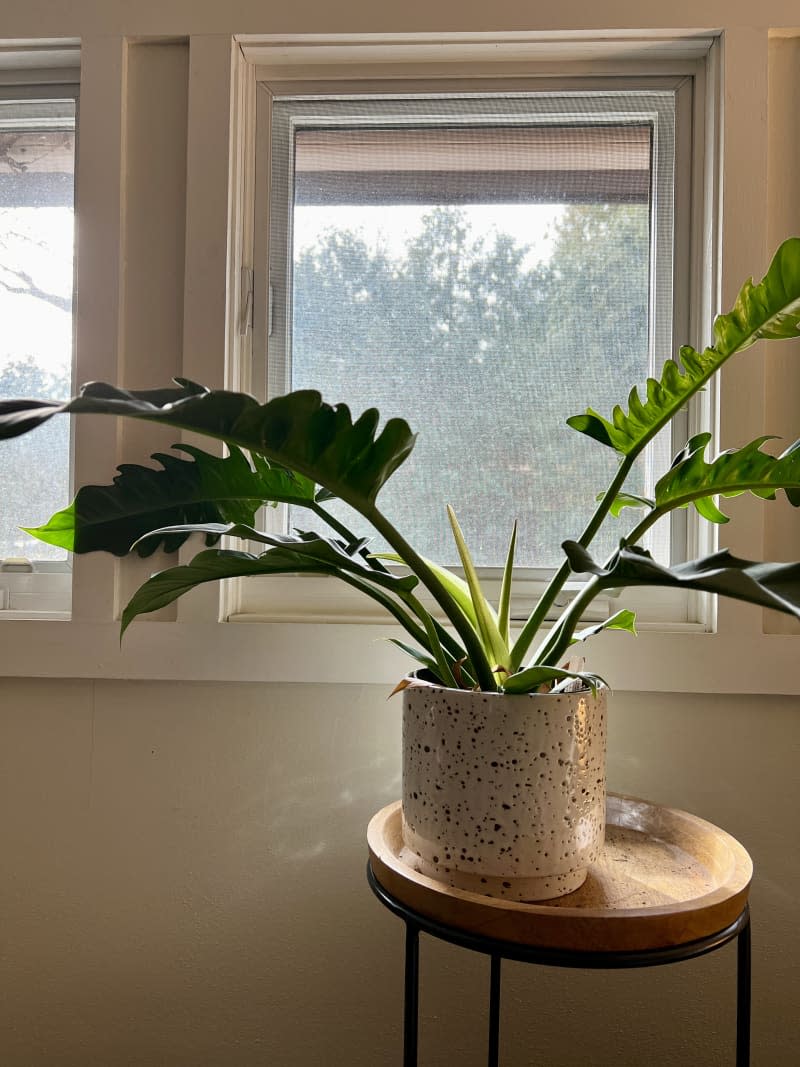
Jungle Boogie Philodendron
This is the plant I got to make up for the fact that I can’t keep alocasia alive. It’s got the same vibe, but is so much happier in my home. I picked it up at the grocery store for a song — just $20.
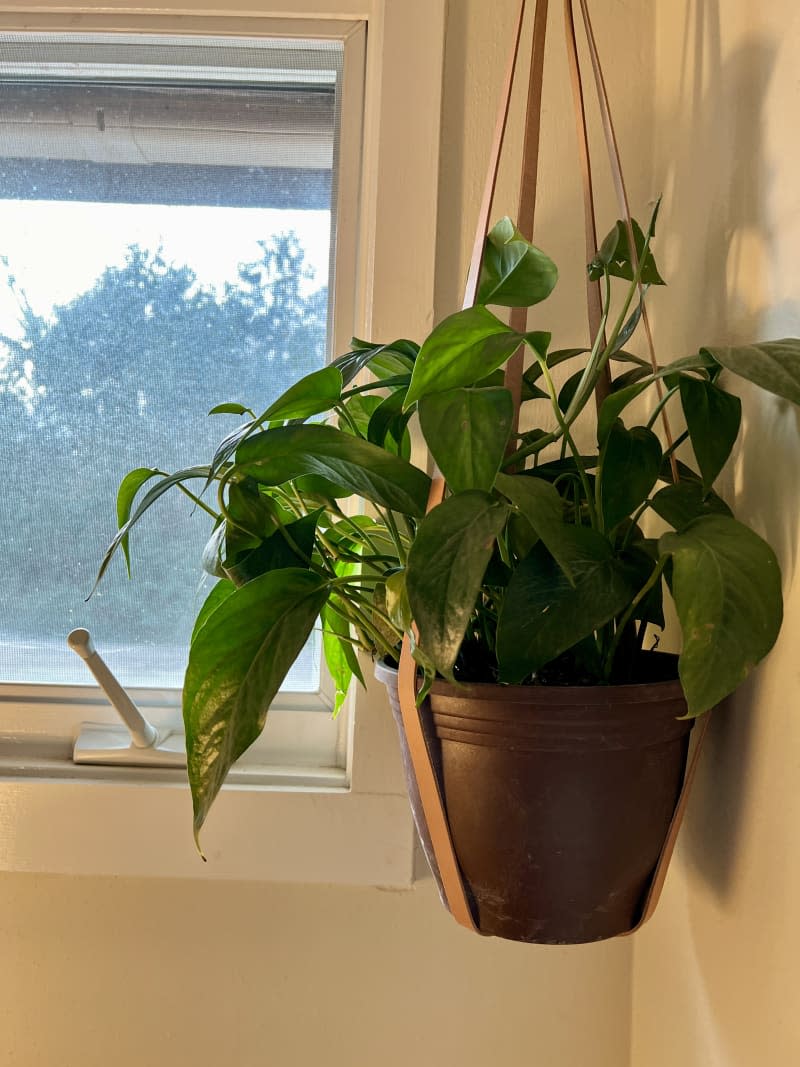
Dragon Tail Pothos
I saw the shiny dark green leaves of this plant at The Home Depot and was immediately sold … and that was before I even saw the name! When this plant gets larger, the leaves will have a sort of forked shape like, I guess, a dragon (I’ve never seen one in real life so I can’t say for sure). Even now, though, its bushy shape and oversized foliage make it a looker.

